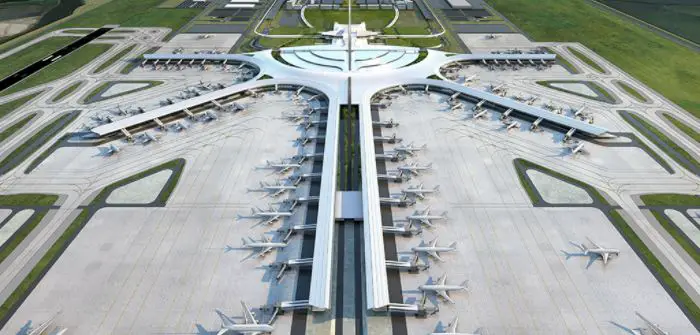Diversified conglomerate San Miguel Corporation (SMC) is advancing into the phased development of a solar farm that will strategically position the cavernous New Manila International Airport (NMIA) in Bulucan as a carbon-neutral infrastructure. This would be done by kicking off installation targeted to provide the electricity needs of the aviation facility’s construction.
According to SMC Chief Executive Officer Ramon S. Ang, the solar plant construction will be ahead. In fact, the solar power plant will be used for the construction of the airport.
The NMIA – at its completion in the first quarter of 2027-will purely run on 200-megawatt baseload renewable energy (RE). It will amalgamate solar photovoltaics (PVs) with battery energy storage systems as well as wind technology.
Integrated Renewable Energy Sources That Will Be Used In The SMC Development of The Solar Farm
Officer Ramon stressed that the airport site has good potential for wind. Therefore wind will be integrated into the planned RE facility development for the airport. In the case of solar panels, the total capacity of the plant could be up to 1,200 megawatts.
Officer Ramon explained that the typical configuration to achieve the base solar power capacity is six times higher. Therefore, to achieve the base output of 200MW, the actual deployment will ensure 1,200MW of ground-mounted solar PV systems.
Continue reading 2.8 GW World’s Largest Solar Energy Park Takes Shape in Dubai
He clarified that the energy requirements of the first phase of the airport, which can accommodate 35 million passengers, will only be 50MW base power and that the progressive development will already include the construction phase of the NMIA.
Officer Ramon pointed out that, according to the prototype of a 50MW solar development project, up to 300 MW of solar PV systems with a four-hour energy storage connection would actually be required.
The SMC CEO emphasized that Bulacan Airport will not only represent a modern and state-of-the-art international gateway, but will also emphasize sustainable development and the environmental management.
He also noted that the favoring solar energy as an energy source for the MNIA will not only pave the way for a cleaner and greener future of the country’s airport infrastructure. But also add to cost savings while protecting the environment.
The aviation industry is one of the sectors where science is urging it to massively reduce its carbon footprint. Airports that have been at the forefront of this innovative system of harvesting solar energy and other renewable technologies.

